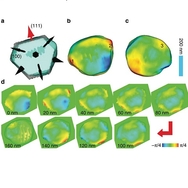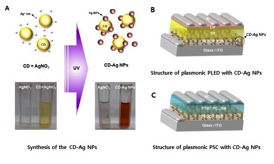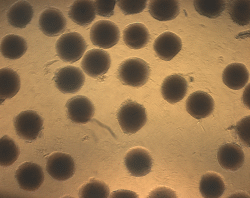Science
NYU-Poly Nano Scientists Reach the Holy Grail in Label-Free Cancer Marker Detection: Single Molecules

- Read more
- 360 reads
Curiosity Makes Its Longest One-Day Drive on Mars

The Mars Hand Lens Imager (MAHLI) camera on NASA's Curiosity rover is carried at an angle when the rover's arm is stowed for driving. Still, the camera is able to record views of the terrain Curiosity is crossing in Gale Crater, and rotating the image 150 degrees provides this right-side-up scene. The scene is toward the south, including a portion of Mount Sharp and a band of dark dunes in front of the mountain. It was taken on the 140th Martian day, or sol, of Curiosity's work on Mars, shortly after Curiosity finished a 329.1-foot (100.3-meter) drive on that sol. The drive was twice as long as any previous sol's drive by Curiosity.
- Read more
- 345 reads
NASA's Spitzer Observes Gas Emission From Comet ISON

These images from NASA's Spitzer Space Telescope of C/2012 S1 (Comet ISON) were taken on June 13, when ISON was 310 million miles (about 500 million kilometers) from the sun.
- Read more
- 343 reads
A high-pressure nanoimaging breakthrough

(a) Isosurface (30%) of the reconstructed amplitude superimposed with a model of the possible {111} and {100} crystal planes. The normal directions of two sets of crystalline planes {111} and {100} are marked by two kinds of arrows (fat and narrow), and the one (111) used for the measurement is marked in red. (b,c) are the top and bottom view of phase shift distribution pasted on the 30% isosurface plot. Three strain distinguished locations numerically labelled are chosen for quantitative measurement as a function of pressure. (d) 3D phase distribution at different slicing depths spaced apart by 20 nm steps from top to bottom of the crystal.
- Read more
- 404 reads
Direct nitrogen fixation for low cost energy conversion

This is a diagram of Direct Nitrogen Fixation on Graphene Nanoplates.
- Read more
- 405 reads
2 in 1 solution for low cost polymer LEDs and solar cells: Affordable, simple yet high-performance PLEDs and PSCs are here soon

- Read more
- 351 reads
Microorganisms found in salt flats could offer new path to green hydrogen fuel

The pink color of salt lakes is caused by salt-loving microorganisms, called halobacteria.
- Read more
- 321 reads
Injectable ‘Smart Sponge’ Holds Promise for Controlled Drug Delivery

In this image, the “smart sponges” are exposed to high glucose levels and are swelling to release insulin.
- Read more
- 367 reads
Snow in an Infant Planetary System

A snow line has been imaged in a far-off infant planetary system for the very first time. The snow line, located in the disc around the Sun-like star TW Hydrae, promises to tell us more about the formation of planets and comets, the factors that decide their composition, and the history of the Solar System.
- Read more
- 391 reads
Human Rights
Fostering a More Humane World: The 28th Eurasian Economic Summi

Conscience, Hope, and Action: Keys to Global Peace and Sustainability

Ringing FOWPAL’s Peace Bell for the World:Nobel Peace Prize Laureates’ Visions and Actions

Protecting the World’s Cultural Diversity for a Sustainable Future

Puppet Show I International Friendship Day 2020


